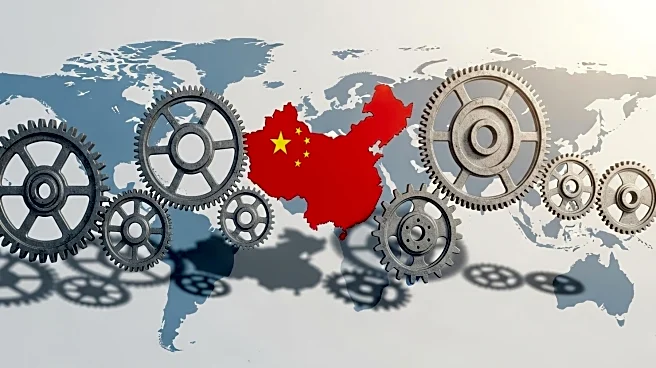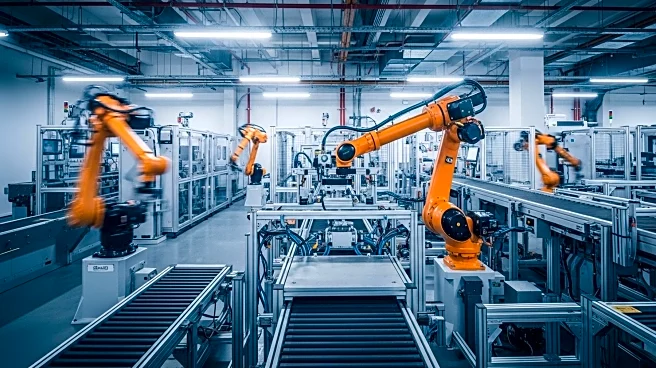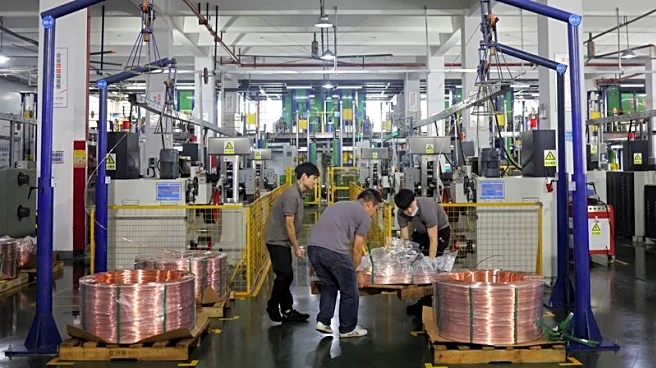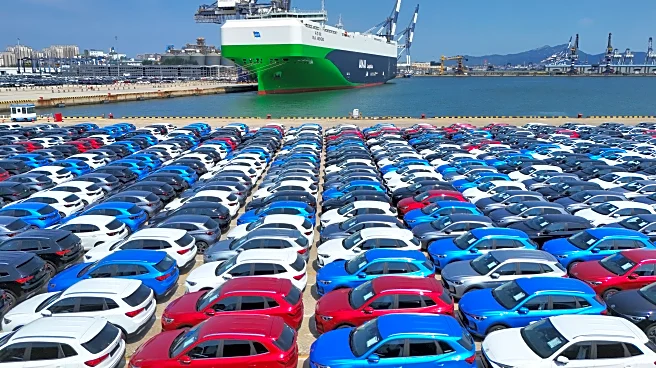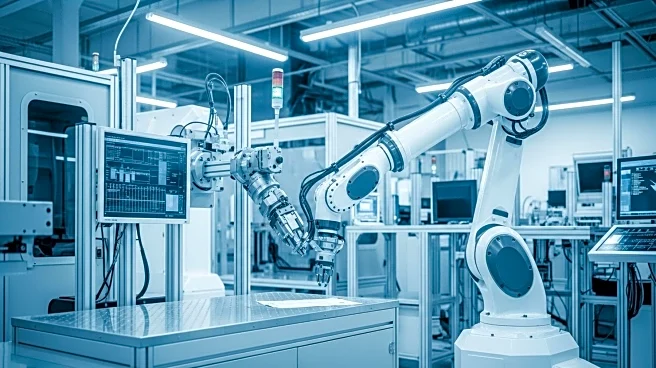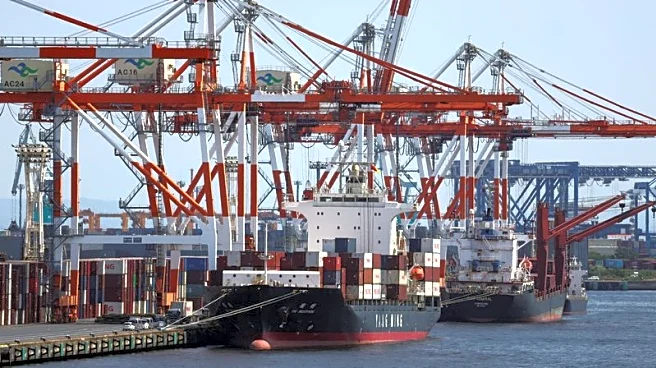What's Happening?
China's manufacturing sector recorded its fifth consecutive month of contraction in August, according to official data released by the National Bureau of Statistics (NBS). The Purchasing Managers' Index (PMI), a key measure of industrial output, was reported at 49.4, slightly up from 49.3 in July. This figure remains below the 50 mark, which indicates growth, and contrasts with a Bloomberg analysts' forecast of 49.5. The last time China saw a PMI above 50 was in March. Despite the slight improvement, NBS statistician Zhao Qinghe noted that overall economic prosperity continues to expand, attributing the previous month's struggles to severe weather conditions such as floods and high temperatures. The ongoing trade talks between Beijing and Washington have extended a truce on reciprocal duties until November 10, as both nations seek to resolve their trade disputes.
Why It's Important?
The continued contraction in China's manufacturing sector highlights the challenges facing the world's second-largest economy as it attempts to recover from the pandemic. The sector's struggles are compounded by a debt crisis in the property market, low consumer spending, and high youth unemployment. The outcome of the trade talks with the United States is crucial, as China's economy is heavily reliant on exports. A resolution could provide much-needed stability and support for the manufacturing sector. However, the prolonged contraction may impact global supply chains and economic relations, affecting U.S. businesses that rely on Chinese manufacturing.
What's Next?
The future of China's manufacturing sector largely depends on the strength of its exports and potential fiscal policy adjustments. As trade talks with the United States continue, both nations are expected to seek a mutually beneficial agreement. Senior Chinese trade negotiator Li Chenggang has emphasized the need for equal dialogue and consultation. The outcome of these discussions could influence China's economic policies and its approach to international trade, potentially affecting global markets and U.S. economic interests.
Beyond the Headlines
The ongoing contraction in China's manufacturing sector raises questions about the long-term sustainability of its economic model, which has traditionally relied on export-driven growth. The challenges faced by the sector may prompt China to explore alternative growth strategies, such as boosting domestic consumption and investing in technology and innovation. These shifts could have significant implications for global economic dynamics and U.S.-China relations.
